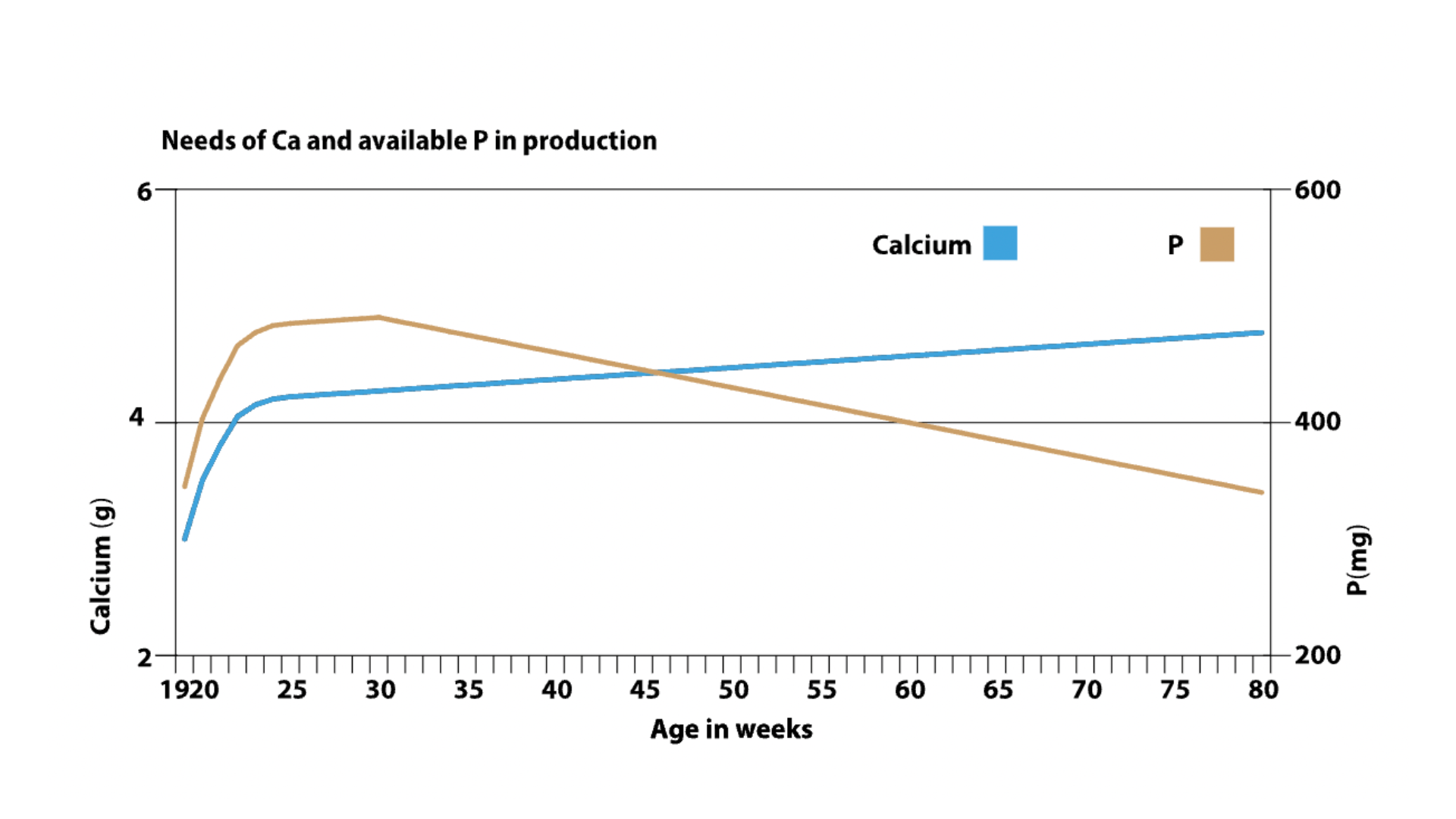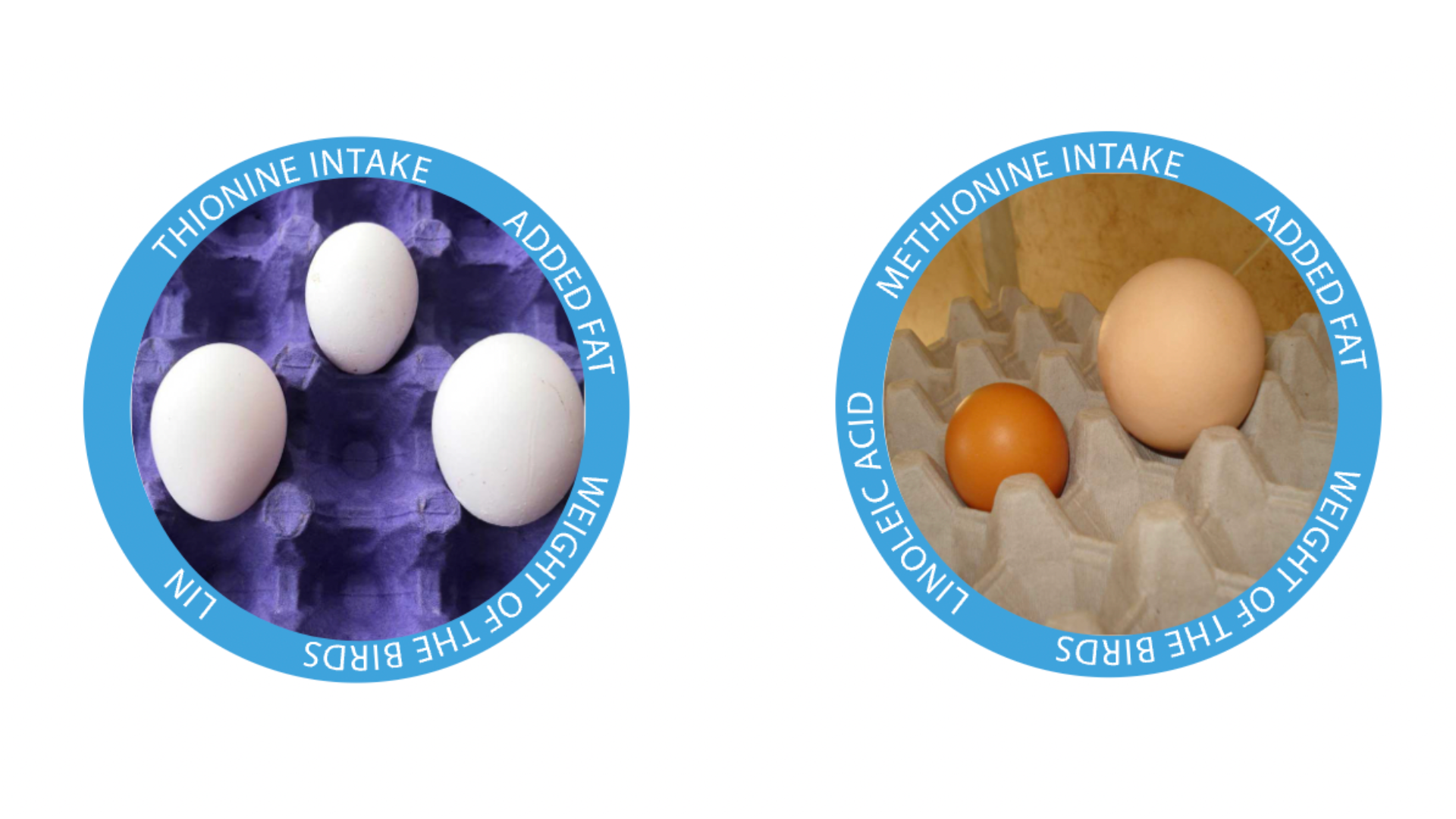The hen’s carcass develops mainly during the first 5-6 weeks of age. A loss of body weight during this period will reduce the laying hen’s longevity.
Incorrect use of pre-lay feed could result in damage to the medullary bone, affecting the laying hen’s ability to utilize calcium from the bone.
At the onset of laying, a lack of feed intake will force the laying hen to perform metabolic effort that will compromise the longevity of the hen.
60 to 70% of the calcium in the eggshell comes from the diet, and 30 to 40% from the bones, particularly the medullary bone. The availability of calcium during shell formation will improve the quality of the eggshell. Midnight snacking, particle size, and the solubility of calcium sources are strategies to enhance eggshell quality.
Excesses or deficiencies will trigger eggshell problems.
Trace minerals are part of the internal eggshell and participate in shell formation through enzymes. Their use may be justified when, with the increase in egg size, the eggshell becomes thinner.


| Aflatoxines | Fatty liver, hepatic necrosis and biliary tract hyperplasia |
| Fumonisine | Multifocal hepatic necrosis; hepatocellular hyperplasia |
| Aflatoxine + T2 | Pale and enlarged liverReduce the metabolic challenges |
Physiological stress in the body caused by cumulative damage from free radicals insufficiently neutralized by the antioxidant system, considered to be associated with aging.


| Mash CFU log/gr | Granules/crusts UFC log/gr | |
| Enterobacteriaceae | <3 | < 1.5 |
| Escherichia coli | <1 | <1 |
| Anaerobic sulfite reducers at 46°C | <1 | <1 |
| Salmonella | 0 | 0 |
| Mold | <3 | < 1.5 |
| Yeast | <3 | < 1.5 |
Methionine is the first amino acid to limit egg weight. However, if we want to control egg size, we need to do so with the whole amino acid profile so that the ideal protein ratio is not broken.
There is a minimum requirement for of linoleic acid so that the size of the yolk is not a limitation on the size of the egg. Care should be taken when using raw materials with low linoleic acid content.
Adding vegetable or animal fats to the feed increases egg size. It improves feed efficiency and reduces the dusty appearance of the feed.
Birds with a high body weight (above the norm) at week 5 will produce larger eggs. It is not recommended to have birds underweight at week 5 (no more than 3%) to control egg weight in production, as performance will be compromised.
Welcome! Your admission is granted, please allow for 2 seconds as the door to our VIP room is opening for you right now! Please come in!
Don't have an account? Sign up now
